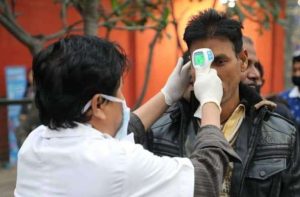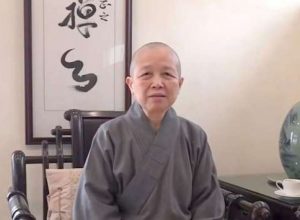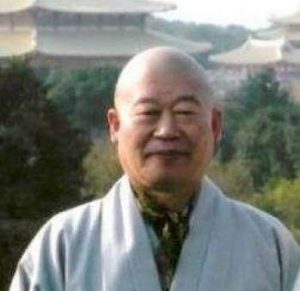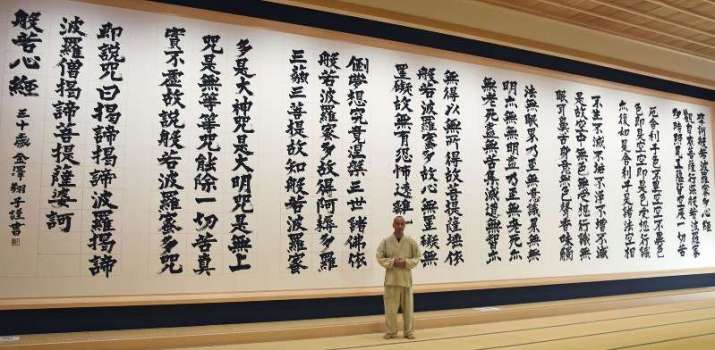
Over the past year, more than 40,000 people have travelled to Ryoun-ji, a temple in central Japan, to admire the world’s largest calligraphy of the Heart Sutra, rendered by Shōko Kanazawa, a 33-year-old calligrapher with Down Syndrome.
The monumental calligraphy measures four meters in height and 16 meters in length, and features 276 characters, running from ceiling to floor and wall to wall. It is made up of several sheets of paper, each four meters high and two meters wide, pasted together to form the vast paper canvas.
“The calligraphy reveals her soul, which is as pure as the Buddha’s. I want as many people as possible to see it,” said Koshi Kimiya, 40-year-old chief priest at Ryoun-ji in Hamamatsu, Shizuoka Prefecture. “[Looking at it] feels like one is being embraced by the sutra.” (Kyodo News)
Shōko completed the work in 2015. It was to be the center piece for the exhibition celebrating her 30th birthday.

From english.kyodonews.net
After her birthday exhibition, Shōko’s 74-year-old mother, mentor, and teacher, Yasuko, did not know what to do with the work due to its sheer scale, but Kimiya, a friend of the family, offered to take it. However, he did not realize the scale of the work until he viewed it when it was exhibited in Matsuyama City in Ehime.
Kimiya had originally planned to give the sutra a place in Ryoun-ji, but none of the existing spaces were large enough. Moved by the work, he decided to redraw the plans for the temple’s Nirvana Hall, originally meant to preserve the ashes of the deceased, to accommodate the sutra.
The size of the of the hall more than doubled. In addition to accommodating the sutra’s height and width, the hall should be at least nine meters deep to allow visitors to see the entire width of the sutra. He also discussed with the architects that the hall should not contain anything that would obstruct the gaze of visitors, and empty space should be included around the work.
The hall opened in November 2017 and Shōko cried tears of joy when she saw the set up. “I want people to look into their hearts as they stand in front of the calligraphy,” said Kimiya. “If viewers’ lives are saved, the work would be even more alive than it is.” (Kyodo News)
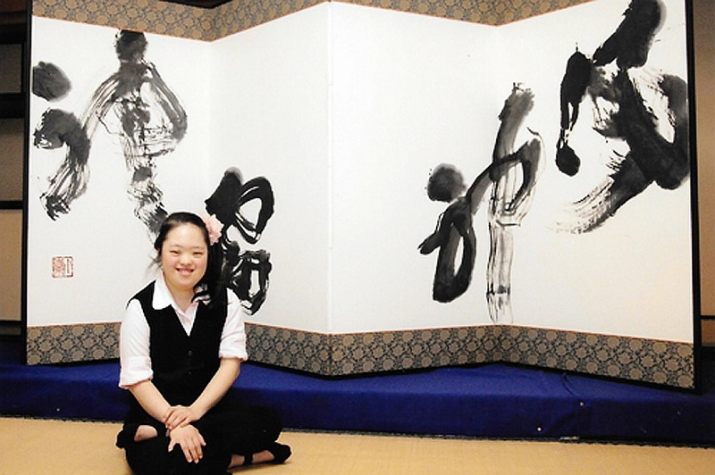
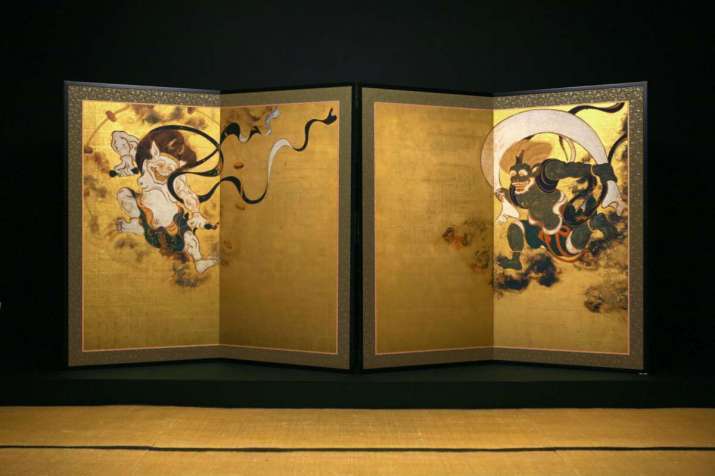
Shōko Kanazawa was born in 1985 in Meguro, Tokyo. Soon after she was born, doctors diagnosed her with Down syndrome. Her mother, Yasuko Kanazawa, was heartbroken and feared that Shōko would never be accepted by society.
Yasuko is a calligraphy teacher and started teaching Shōko when she was just five years old. It was not easy for Shōko to learn how to draw the complex characters, but mother and daughter persevered together.
Shōko copied her first Heart Sutra at the age of 10, when she was told that she had to leave her regular primary school for a special school for handicapped children. To help her cope with this change, her mother taught her how to write the 272 characters of the Heart Sutra. In the six months that followed, during which Shōko and her mother hardly left the house, Shōko completed 10 sets of the sutra. Her mother mentions that the experience taught her perseverance. She has since made multiple other copies of the sutra, most notably when she turned 20, and the version on display at Ryoun-ji, drawn for her 30th birthday.
Shōko had her first solo exhibition when she was 20—an idea of her father, who passed away when she was 14. “He appreciated Shōko’s calligraphy more than I did and said she should have her own exhibition. He said we shouldn’t hide Shoko’s condition, we should use the exhibition to tell people how well Shōko was doing,” her mother explained. (The Straits Times)
Her work has been well received and today she is an acclaimed artist praised by even the most discerning critics in the country. She has made more than 1,000 exhibitions and other public appearances in the past decade, in Japan and abroad.
There are now four museums dedicated exclusively to her calligraphy, Shōko has spoken at headquarters of the United Nations in New York, and even the emperor and empress of Japan have added Shōko’s work to their private collections.
Shōko continues to work on her calligraphy—something that she notes calms her—and has started with the next challenge in her life: at age 30, she moved into her own studio apartment and is, with as little help from her mother as possible, working hard at being independent.
The Heart Sutra is on permanent display at Ryoun-ji. The temple is also is organizing an additional exhibit of calligraphy works by Kanazawa, from 21 November–3 December 2018, which can be viewed free of charge.
See more
Shoko Kanazawa
World’s largest Buddhist sutra calligraphy overwhelms visitors (Kyodo News)
‘Shine Brightly’: Calligrapher Shoko Kanazawa Writes New Year Kanji for ‘JAPAN Forward’ Readers (Japan Forward)
Shoko Kanazawa: A Down Syndrome Child’s Long Road to the ‘Light’ (Japan Forward)
Face To Face – Shoko Kanazawa: Nothing Can Hold Me Back (NHK World)
It Changed My Life: Calligrapher Shoko Kanazawa moves people to tears with her art (The Straits Times)








